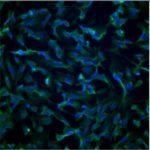Link to Pubmed [PMID] – 18954091
Biochemistry 2008 Nov;47(47):12277-89
Triplex-forming oligonucleotides (TFOs) are sequence-specific DNA binders. TFOs provide a tool for controlling gene expression or, when attached to an appropriate chemical reagent, for directing DNA damage. Here, we report a set of rules for predicting the best out of five different triple-helical binding motifs (TM, UM, GA, GT, and GU, where M is 5-methyldeoxycytidine and U is deoxyuridine) by taking into consideration the sequence composition of the underlying duplex target. We tested 11 different triplex targets present in genes having an oncogenic role. The rules have predictive power and are very useful in the design of TFOs for antigene applications. Briefly, we retained motifs GU and TM, and when they do form a triplex, TFOs containing G and U are preferred over those containing T and M. In the case of the G-rich TFOs, triplex formation is principally dependent on the percentage of G and the length of the TFO. In the case of the pyrimidine motif, replacement of T with U is destabilizing; triplex formation is dependent on the percentage of T and destabilized by the presence of several contiguous M residues. An equation to choose between a GU and TM motif is given.

